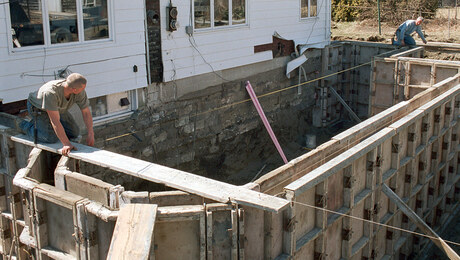I am building a new house and the GC wants to use a power vent for the furnace. I would appreciate opinions on power vents, both pro and con. (I have one now and I am really not happy with it) Also, I assume that there is a substantial savings to the GC if he goes with the power vent versus running a flue up a chimney? Any remarks related to that would be appreciated as well.
Thanks


















Replies
The only problem that I have come across Acornjim is that the glued joints on the ABS of the waste gas line have cracked and thus caused deadly CO to enter dwellings. It is recommended, and now code up here that these PVC lines not be buried in anything that makes it difficult to inspect for cracks. Otherwise the only drawback may be the loud fanmotor that drives the waste gases.
JD
I was under the impression that the power vent models were used on the more efficient furnace models. I have 2 furnaces of this type, and have had no problems.
They are noisy, as has been pointed out. I wonder if any of the manufacturers have addressed this, and now offer quieter ones?
Don't know why it would be cheaper for the GC. I'd rather have the power vent than have an inefficient furnace and lose space for a flue. (And have another roof penetration)
Why are you not happy with the one you have now?
Who are you going to believe, me or your own eyes?
We have already had to replace the motor in the unit we have now. (Yes, we do the regular maintenance on it) And it is only 7 years old. Another draw back is the fumes that come out at ground level. The location where the plumber wants to vent the furnace is about 10 feet from a deck.
Our house that is under construction already has a chimney for the gas fireplace so there would not be the need to poke any more holes in the roof. I assume that a furnace that was vented through a chimney would require a separate flue that would run along side the flue for the fireplace.
Thanks for your response
I posted this reply to your question in the Energy forum, but will paste it here too.
I assume you are talking about oil.
There is only one unit that I will power vent. The Energy Kinetics System 2000. And then only in rare cases like electric heat conversions where there is no chimney. It is low mass and burns clean. They use a power venter that blasts the flue gasses out away from the house. Check it out on the web.
There are three things to consider with power venting besides the unit. Location, location, location. Codes require certain distances from windows, doors, decks, walkways and air intakes. Things you should consider are: The flue gasses have sulfur and will discolor and corrode siding and even rain gutters and drip edges 10 feet above. There are more safeties on a power vent system. So don't vent into prevaining winds. You will have a lot of nuisance safety lockouts. Don't vent near shrubs. Don't install under bedrooms or any other place that the noise will bother you. As they get older they will rattle, squeal and eventually quit, requiring replacement. Make it servicable. Don't stuff it up in the floor joists where it can't be worked on. Keep proper distances for fire prevention. Make sure the codes and installation instructions are followed.
If you are building new, put an "All-Fuel" stainless steel chimney up. If you go masonry, line it with stainless steel not clay. In the long run it will cost you less.
Remember, the guy installing it is gone when the job is done. You have to live with it and probably someone else has to service it.
Yesterday I couldn't even spell plumber, today I are one.
Noise: varies from model to model. Any decent furnace will have a draft inducer now, both 80+ and 90+, so the noise issue will be the same.
90+ condensing furnaces are reputed to be more expensive to maintain/repair.
There were problems in the 80's with a gray plastic plastic for venting 90+; that product has been recalled and is no longer manufactured. I rarely see problems with PVC used for the flue. (Less like than seeing problems with metal flues on natural draft and 80+)
The few times I've found high levels of CO coming from a 90+, the co levels quickly dropped as I moved my meter probe away from the flue. In one case, a couple of feet dropped levels to barely measurable where the direct measurement exceeded 1000 ppm. 10 feet from a deck? I wouldn't sweat it, myself.
Talk to your heating contractor to get his/her opinion.
_______________________
"I may have said the same thing before... But my explanation, I am sure, will always be different." Oscar Wilde